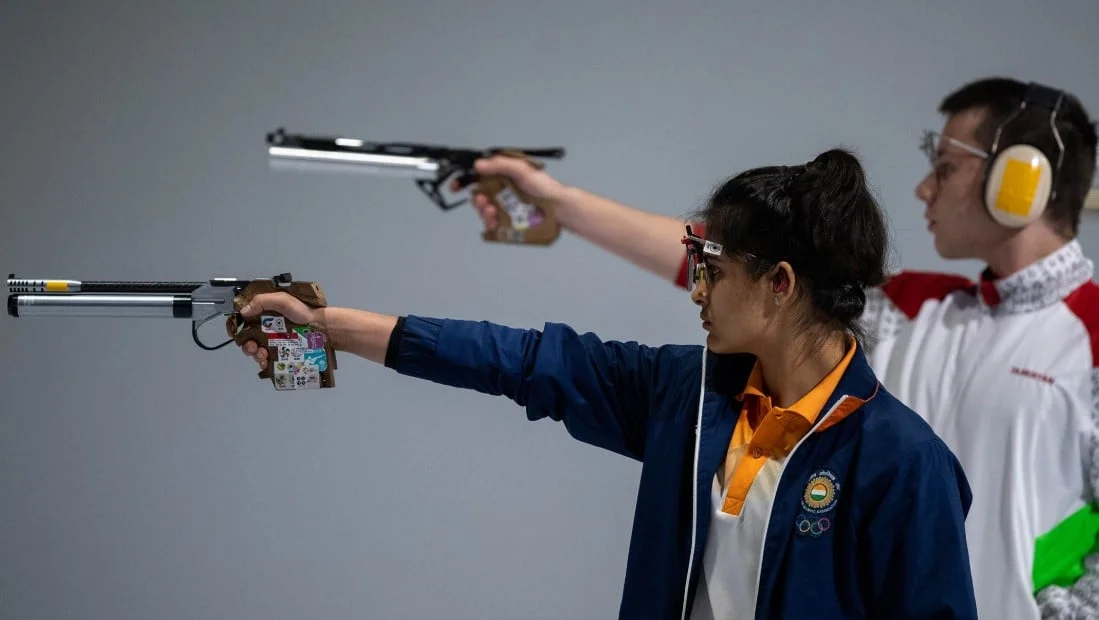
Types of sports short weapon: The word “pistol” is used for the generic name of any type of short weapon, including revolvers, single-shot pistols, semi-automatic pistols, and gas or compressed air pistols. Their design and caliber vary considerably, from a .45 caliber centerfire pistol to .177 (4.5 mm) caliber air rifles or guns.
Table of Contents
There is not going to be a detailed description of each model, and we will refer mainly to the most interesting aspect of each one, related to sports shooting. The consultation of specific treaties in this regard is recommended for the interested party.
Manufacturers produce them in almost all sports calibers from .22 to .45. The revolver houses the cartridges in a cylinder, and the hammer mounts as it rotates. In the single-action type, you can manually rotate the cylinder, while in the double-action type, you rotate it by pressing the trigger. As the rotation occurs, one of the chambers aligns with the barrel. The mechanism operates relatively slowly, both during cocking and when firing the shot.
Despite this drawback, the revolver offers several advantages. Its design allows for a favorable angle of the stock, which improves wrist inclination and enhances control during shooting. Additionally, since it sits low in the hand, the handgun transmits the recoil more directly to the arm, minimizing muzzle rise. Furthermore, the absence of moving parts ensures that the bullet’s trajectory remains unaltered after ignition.
Manufacturers produce them in all sports calibers. The shooter typically inserts the cartridges into the pistol through the stock, where the magazines house them. The explosion of the first cartridge drives the bolt block (also known as a “slide”) backward. Simultaneously, the extractor removes the empty case from the chamber, while an ejector drives it out of the gun.
During this block movement, the trigger mechanism reassembles. As the block moves forward, it retrieves a bullet from the magazine and inserts it into the chamber, preparing the pistol for the next shot.
Semi-automatic pistols are suitable for various competition modalities, particularly those with limited time per shot. They are widely used in shooting ranges. The designs vary significantly, with some featuring magazines in the stock and others positioned under the barrel in front of the trigger guard. These variations naturally result in different centers of gravity.
The handle angles vary from almost 90º of the military type to those of variable angle, which, together with the possibility of having more or less anatomical grips allow a better adaptation to the shooter’s hand.
The name implies that it is possible to load only one cartridge at a time. From a sports perspective, we can distinguish two types: those designed for the Olympic specialty of Free Kick at 50 meters and any other single shot used for precision and slow fire modalities.
Manufacturers design Free Kick pistols for maximum precision, allowing shooters to use only .22 LR caliber ammunition. They are to the liking of the shooter, with few legal limitations. This type of shooting is the equivalent of “Formula 1” shooting with short arms. Small caliber single-shot pistols, not included in so-called free pistols, have their scope in shooting schools.
In shooting, only .177 (4.5 mm) caliber is permitted with projectile exit speed limitations. This type of pistol obtains the energy to propel the bullet, commonly referred to as “pellets,” from the compressed air in a chamber. The cylinder, operated manually through a loading lever, drives the bullet using the stored air.
Modern competition pistols acquire the air or gas (CO2) charge from a built-in tank, allowing them to deliver a large number of shots without the need for manual reloading.
To choose a gun, you have to take into account at least three factors:
Many clubs introduce pneumatic pistol shooting training as a safety measure and due to legislative restrictions. It is recommended to start firearm shooting by practicing with a Club pistol before you purchase your own. Ideally, start with a .22 LR caliber pistol, which offers versatility for various sports disciplines. This allows you to determine your preference or aptitude before selecting a more specialized pistol.
If you prefer a thick caliber from the start, you should choose a centerfire pistol or revolver. It’s important to note that, in this situation, the learning process becomes more expensive in every way. However, regardless of the scenario, you must follow the axiom: “a bad weapon never makes a good shooter.” This means that right from the start, you should select a weapon that ensures a minimum level of results.
Hunting isn’t just a sport it’s a legacy of stewardship, respect for nature, and hands-on…
If you’re new to hunting or target shooting, choosing the right rifle scope can feel…
If you're out bowhunting, you know that estimating yardage isn’t just helpful it’s essential. A…
Table of Contents Introduction Gun ownership laws and regulations in the United States vary from…
For hunters and shooting enthusiasts, having a secure and organized way to transport firearms is…
When the hunting season approaches, every serious bowhunter knows: your bow isn’t just gear it’s…
This website uses cookies.